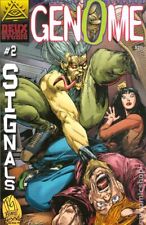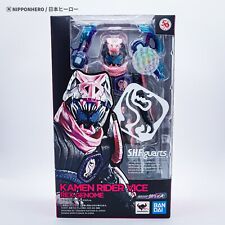Arc Arcana (FF10): Yuna's weapon Arc Arcana comes from Ars Arcanum (a special move in Kingdom Hearts). Ars Arcanum is the name of a book written about alchemy, and various magic-related things. Also, an arcanum is a deep secret or mystery, or a remedy, or elixir, of which the plural is arcana. This weapon has the four elemental strikes on it.
Artemis Bow: Artemis is a goddess from Greek myths. She carried a bow and arrow and was also the goddess of fertility. She was the sister of Apollo, and is the subject of the Temple of Artemis, one of the Seven Wonders of the Ancient World. Artemis is actually the goddess of the forest.
Asura (various): The Asura is from Indian (Hindu) mythology, and literally means "those who were denied ambrosia". The legend says that the father god, Brahma, married the goddess Shatarupa and created two races of people, the Daityas and Adityas. Both races working together extracted the essence of immortality from the seas, but the Adityas kept the essence to themselves. The Daityas then became the gods' enemies, and became known as Asuras. According to the story, the Asuras' conflicts with the gods then became the origin of all conflict. (Note: despite the term similarity and place of origin, this is not the same as the summon Ashura.)
Atma Weapon (FF6): Though it is come to an understanding that Atma is a mistranslation of Ultima, in the Hindu epic, the Bhagavad-Gita, the word "atma" or "atman" refers to soul or one's spirit. Quite interesting in the fact a townsperson in the game mentions that the Atma Weapon changes depending on its controller's spirit.
Atmos Blade (FFTA): The name probably is from "atmospheric" (which makes sense because it's an lightning-elemental sword, and teaches "Air Render").
Balmung (FF10): Kimahri's weapon Balmung was a magical sword used by Odin in Norse mythology. Odin stuck it in a sacred oak tree, and Odin said that the one who could pull the sword out was destined to win in battle. This sword has overdrive abilities.
Barong (FFTA): A kind of cutting weapon with a thick back and thin razorlike edge, used by the Moros of the Philippine Islands.
Baroque Sword (FF10): Baroque Sword comes from the word Baroque, a highly refined European art form, or a musical style of the same name. The word baroque means 'bizzare'.
Bastard Sword (FF6): This was changed to Epee in the American version (probably for censorship reasons). Bastard swords can be held with either one or both hands. It's also the sword that appeared on the American versions of the FF boxes. Cloud's Buster Sword may also have been censored or translated from "Bastard Sword".
Belladonna Wand (FF10): Belladonna is a poisonous herb also known as deadly nightshade. In Italian, the word belladonna means "beautiful lady". This weapon has 'poisontouch'.
Caladbolg (FF10): Tidus's ultimate weapon takes its name from Celtic myth; it's the Irish equivalent of the Excalibur (or, depending on who you ask, the inspiration for the Excalibur). Caladbolg means 'hard belly' and is capable of consuming everything. The name of King Arthur's sword was first called Caladfwlch, a Welsh word derived from Calad-Bolg meaning "Hard Lightning". Later it became the Caliburn and finally the French-influenced Excalibur.
Calcite Staff (FF10): Calcite is a common form of natural calcium carbonate, in crystallized form. This weapon has 'stonestrike'.
Cat's Claw: This may not be meaningful, but in Fritz Leiber's "Lankhmar" stories, the thief/mage Gray Mouser's dagger was named Cat's Claw.
Cinqueda (FFTA): It's technically a dagger, but is also similar to a sword. The name is apparently Italian, meaning "five fingers" (referring to its width at the base, or length). They originated in Italy in the late 15th century, and went out of style in the early 16th century.
Claymore (FFTA): A Scottish double-edge sword.
Colichemarde (FFTA): A small 18th century French sword made specifically for dueling that became today's epee. Also, it's one of the types of swords Duncan had in "Highlander".
Dance Macabre (FF10): Literally "dance of death", it refers to a popular early rennaissance art theme of skeletons dancing and playing musical instruments as a symbol of the brevity of human life. It was the medevial/rennaissance equivalent of the grim reaper. This weapon has 'deathstrike' ability.
Deus Ex Machina (FF10): Rikku's Deus Ex Machina means either 'a god introduced by means of a crane in ancient Greek and Roman drama to decide the final outcome' or 'a person or thing (as in fiction or drama) that appears or is introduced suddenly and unexpectedly and provides a contrived solution to an apparently insoluble difficulty'. The second one makes sense given that the weapon has all elemental strike abilities, it takes advantage of all possible enemy weaknesses. Although in reality if the enemy also has an immunity to a particular element, the Deus Ex Machina is useless. Literally, it simply means 'ghost in the machine'. Given the Al Bhed's connections to machina (machines), this is painfully obvious. If we were to use 'anima ex machina', we'd get 'spirit of the machine'. Spirit and ghost are two very different things in Japanese. Spirit is a persistent thing, ghost is a gone but remembered thing.
Durandal (FF10): The Durandal was a carrier aircraft weapon 2.5 meters in length. Both the FF10 weapon and the aircraft carrier were probably named after the sword of Roland in the Middle Ages epic poem "Song of Roland". It was forged by faeries (elves) and was able to cut men in half easily. It was also unbreakable.
Ehrgeiz (FF8): German for "ambition".
El Cid Sword (FFTA): See Characters.
El Dorado (FF10): El Dorado (one of Yuna's weapons with the 'gillionaire' ability) was a city or country of fabulous riches held by 16th century explorers to exist in South America. It is also the name of any place of fabulous wealth or opportunity.
Epee (FF6): French for "sword". This is the sword used in fencing. It's also one of the three major fencing styles (the other two being foil and sabre).
Estoc (FFTA): A German sword used for penetration or spearing.
Excalibur: Excalibur was the sword that King Arthur pulled from the stone to prove his worthiness as king. The ideas of knighthood and chivalry date back to Arthur's time. Some legends have Arthur being given Excalibur by the Lady of the Lake; more complicated legends have her as Galahad's and Launcelot's mother, but most just make mention of her without saying who she actually was. The name comes from the Latin 'Ex Caliburn' which means (more or less) 'above or beyond steel'.
Exeter (FF8): A reference to Exeter of England, with was tied up with the Arthurian myths, including one involving Excaliber. See also Irvine's Guns.
Femme Fetale (FFTA): French for "fatal female", it's entered the English vernacular as a woman you definitely want to keep away from.
Fey Bow (FFTA): Fey means "fairy-like".
Flamberge (FFTA): A thin 2-bladed sword with a wavy blade. Very popular in Germany during the 15th to 17th century. Also puns on "flame". People who've played the "Tales Of" series should recognize this along with the Vorpal Blade.
Gae Bolg (FF10, FFTA): A spear from Celtic legend, furnished with barbs running in opposite directions and manipulated under water with the toes. It was used by Cuchulainn. Also known as the Gae Bulga. This lance has overdrive abilities in FF10.
Galatyn (FFCC): Galatyn is the name of the sword of Sir Gawain in Arthurian legend.
Genji Blade: The Genji clan was famous for its battles with the Heike, another samurai clan. In 1185, the Genji won a decisive battle with the Heike and almost eradicated them completely. The specific member of the Genji clan indicated here is probably Minamoto Genji, the first of the Genji line, and the subject of a book called "The Tale of Genji" by Murasaki Shibiku. Minamoto was a commoner given the name Genji by the emperor of the time (around 925 A.D.) for his prowess in combat. He was rumored to have been raised by tengu, or have tengu blood (tengu are japanese birdmen who are master swordsmen and said to inhabit Mt. Fuji).
Giyaman Bell: Giyaman is old Japanese for "glass". There's probably a legend about it somewhere, but off the top of my head, I think a glass bell would a) sound very clear, but b) be completely useless.
Gokuu Rod (Tactics): Named for Son Gokuu, the hero of an ancient Chinese tale. I don't know the plot of this story, but Son Gokuu is also the name of one of the main characters in the popular manga and anime series Dragon Ball by Akira Toriyama. Gokuu's main weapon in the story was a sacred rod. The name of this Chinese tale is "Journey to the West" and that the rod also has the powers to change its length at will.
Gorgon Gaze (FF10): See Monsters (Stheno). This weapon has stonestrike.
Graedus/Gladius (FF6/9): The Latin "gladius" means "sword". Incidentally, 'gladius' is the root word in 'gladiator'.
Gungnir: This was the name of Odin's spear in Norse mythology. The Gungnir was supposed to have always pointed at the strongest member of an enemy party. It's also supposed to have never missed its target.
Hades Bow (FFTA): See Summon.
Hamelin (FF9): The flute from the story of the Pied Piper of Hamelin, who captured rats by playing a flute.
Hyperion (FF8): This is Seifer's blade in FF8. Hyperion is the greek Titan of light, brother of Cronos and uncle of Zeus. He fought against his nephew in the wars between the Titans and the Olympians and was eventually locked in Tartarus with the rest of them when they lost. With his sister, Thea, he was the father of Helios, the god of the sun, and Selene, goddess of the moon, as well as Eos, greek goddess of the dawn. Hyperion is also a very rare type of double-edged sword that was used in the dark ages. If you look at Seifer's sword you will notice that both sides of the blade are sharpened.
Holy Lance: See Longinus.
Hrunting: This is a reference to the old English epic poem, Beowulf. Hrunting is the sword given to Beowulf by Unferth (a man who previously scoffed at Beowulf in envy) as Beowulf is preparing to seek out and kill Grendel's mother in her underwater lair.
Ichimonji (FF10): There's a school called the Ichimonji School in Japan that is well-known for its blades. The word means "straight line" or "beeline".
Iga and Kouga Knives (Tactics): These are the names of two ninja clans from Japan.
Irvine's Guns (FF8): These are all named after warships from World War II. All except Bismarck are taken from the Royal Navy.
Jambiya (FFTA): A 19th-century Arab dagger, usually long and curved, and meant to be carried in a belt.
Joyeuse (FFTA): The name of Sir Lancelot's sword.
Kaiser Knuckle: Kaiser is the name for an emperor in the Germanic languages (e.g. Kaiser Wilhelm). It's probably a smudging of "Cesar" (Rome overran the Gauls, who lived around Germany, back in the early A.D.'s). I've even seen in the Talmud (dating back to the same period) that Roman kings are referred to as "keisar" in Aramaic.
Khukuri (FFTA): A 'khukuri' is a type of sword originating from Nepal.
Kikuijimonji: "Kiku" means chrysanthemum. "Ichimonji" can refer to the Japanese kanji for "one", but I think that in this case, it refers to the "Ichimonji", a group of swordsmiths who aided the Emperor Gotoba in developing swords. Apparently, Emperor Gotoba was an avid swordsmith. With the help of the Ichimonji, he commissioned many swords (and supposedly made a few). However, the Emperor was not permitted to sign his name on the sword, so he used a chrysanthemum with 16 or 24 petals. Hence, the name "kikuichimonji". (See also here and here)
Kiyomori (FF Tactics): A Japanese shogun.
Kotetsu: A Japanese sword that is shorter than a Katana but is longer than a Wakizashi. Its shorter length gives it more defensive
abilities than the Katana. It is sometimes called Naga-Wakizashi, which means "long Wakizashi". This description seems to fit the Kodachi, a weapon used by Ninjas in FF5 and Shadow in FF6. "Kotetsu" refers to swords made by Nagasone Kotetsu (Nagasone probably refers to the place where he came from.) Kotetsu started out making armor but ended up making swords, and that Kotetsu means "iron tiger". The swords were normal katana length, not kodachi-length.
Kris (FFCC): A kris is an Indonesian ritual dagger that often has a curved, serpentine blade.
Kunai: Multi-purpose tools "used to help climb trees and walls", and also "for probing, digging, and chiseling". Or at least, that's what this site claims." Since it's a ninja weapon, that'd make sense for the climbing abilities.
Kwigon Blade (FFTA): The name should have been Qigong Blade. Qigong is a self-healing art that combines movement and meditation. Visualizations are employed to enhance the mind/body connection and assist healing.
Laevatein (FF10): Yuna's weapon Laevatein was taken from a magic wand in Norse mythology of the same name, forged by god Loki. The name Laevatein means, "Lie Stick" or "Wand of Destruction". This has the S.O.S. Overdrive ability.
Largamente (FF10): Largamente probably comes from a Spanish word, 'largamente', which means, 'at length; generously or liberally'. This sword has slowstrike.
Lohengrin (FFTA): A play by Richard Wagner (the guy who brought us the famous "Ride of the Valkyries," among other things)
Longinus (FF7, FF10): This was changed to 'Spirit Lance' in the American version, although this is its name in FF7 (JP) and FF10 (JP). It was the weapon that pierced Christ's side after they took him down from the cross, and also the name of the Roman centurion who used it. Supposedly, the holder of this weapon would be granted immortality, and it has also been said that Hitler was looking for this during World War II. It's also the name of a Greek philosopher, but that's probably a coincidence. (It's in Bahamut Lagoon as well).
Last Letter (FFTA): This is most likely a reference to Zorro. The L.L. is a rapier (The kind of sword Zorro used). The last letter in the alphabet is "Z". Zorro would score a "Z" WITH the tip of said rapier as a means of leaving his mark. This origin is backed up by the fact that Square has used a similar name, "Final Letter," as an Epee tech in Romancing SaGa 3.
Manganese (FFTA): Element #25 on the Periodic Table, and is used in making stainless steel, among other things.
Main Gauche: This is French for "left hand". It's a knife with some defense ability. They're daggers, not swords, with big curvey hand-guards. You would have a rapier in your right hand which you would fight with, and you would use the big hand-guard on the main-gauche to block any blows from an opponent, assuming he was fighting with a rapier (if he had a big heavy sword then a main-gauche wouldn't do a fat lot of good).
Marduk Bow (FFTA): Marduk was an ancient Babylonian god. See Mythincal-Folk for more.
Masamune: One explanation is that there was a feudal lord named "Masamune Date" (Date (da-te) is the family name) who ruled Rikuzen (area near Sendai) around the early 1600's. He lost one of his eyes due to sickness in childhood, and he was nicknamed "Dokuganryuu Masamune" (Masamune, the one eyed dragon). Another story says that there was a blacksmith named "Masamune", and his sword was so sharp that you could drive it into the ground in a lake, and leaves that floated by would float around the Masamune due to its holy power. Masamune is actually the name of a Japanese swordsmith from the 11th-12th centuries; the weapons are in display in museums. It's quite possible that the swordsmith's name is based on the legends. "Masamune" refers to swords crafted by Goro Nyudo Masamune (around 1265-1358), one of the most famous Japanese swordsmiths. According to Japanese legend, the Masamune blade was the most powerful sword in all the world. When piercing the flesh, it would shed no blood, as the Masamune was not "bloodthirsty", which explains why no blood was shed when Sephiroth killed Aeris in FF7.
Medusa Arrows (FF4): Named for the woman of Greek legend who could turn people to stone by looking at them. She had snakes for hair.
Murasame: The characters are "town" (mura) and "rain" (ame). Murasame is used to define a rain that rains in small area (sometimes
quick rain). Thus, it could mean Murasame can cause "quick blood rain". And in some stories, Murasame is cursed. Though the leaves floating
down the river will avoid the Masamune, they float right into the Murasame and get split in two. Murasame was a swordsmith like Masamune long ago in Japan. His swords were famed for the 'bloodlust' they supposedly created in those who wielded them. One day, Murasame challenged Masamune to a competition, to prove who was the better swordsmith. He placed his finest blade into a slow-moving stream; soon after, a leaf floated slowly into the edge of the blade, and was sliced, quietly and easily, into two pieces. Afterwards, Masamune placed his blade into the same stream. He soon proved that he was the better swordsmith, as leaves seemed to avoid his blade; a proof of its holy power. There are stories of a swordsmith named Senzo Muramasa who was supposedly an insane, but brilliant, student of Masamune, and that his swords would cause unnecessary bloodshed (Ratti, Oscar and Adele Westbrook, Secrets of the Samurai. Castle books, 1999). However, I find no mention of anyone by the name of Murasame. The "curse" of the sword was that it had brought misfortune to the ruling Tokugawa family. Also, some people who had the swords would erase part of the name of the swordsmith the Mura or the Masa and felt at ease at doing so to avoid any misfortune.
Nimbus Rod (FF10): Nimbus is Latin for cloud. It's also a word used today to mean a halo, or cloud-like radiance, or an aura. It is also a term used to describe a rain cloud, usually gray in color. This weapon has double overdrive.
Nirvana (FF10, FFTA): Nirvana (Yuna's ultimate weapon) is thought to be the final beatitude that transcends suffering, karma, and samsara and is sought especially in Buddhism through the extinction of desire and individual consciousness. Also, a place or state of oblivion to care, pain, or external reality. A goal hoped for but apparently unattainable. Also: "union with the universe and escape from the cycle of death and rebirth". This fits very nicely with Yuna's role in FF10. Buddhism makes it extremely clear that only deities can escape the cycle of reincarnation. This is how Buddhism defines a deity - some variants of Buddhism claim this is absolutely impossible and no deities can exist. This can be taken two ways. One way is that no mortal may ever reach Nirvana. The second is that Nirvana is not forever and that the soul will be reborn once it leaves Nirvana.
Nosada (FFTA): Comes from the 'Izumi no Kami Kanaseda', also called Nosada, the sword of Hijikata Toshizou, who founded a dojo of Kendo ('the way of the sword').
Obelisk (FF9): A type of short dagger. An obeliskis a four-sided tapering structure with a pyramidal top often used in Egyptian architecture. The most familiar example is the Washington Monument.
Oblige (FFTA): It says it's a "sword of the nobles"... From the phrase "noblesse oblige," perhaps?
Osafune: Short for Bizen Osafune, also called Osafune in FFT. Osafune was the largest and most prestigous sword-smithing schools
in ancient Japan. Formed by Mitsutada during the Kamakura period.
Peacemaker (FF7, FFTA): This is the name of a popular gun used in the old west.
Perseus Bow (Tactics): Named for the archer in Greek mythology. He's the one who killed Medusa (see Aegis Shield above).
Quicksilver (FF7): This is a real brand of guns. Quicksilver is also another name for mercury (probably the origin of the gun as well).
Ragnarok Rhomphaia (FFTA): A greek word apparently referring to a type of sword from the Bible; specifically the Book of Revelations
Rune Blade/Axe/Bell: Runes were the letters used by Icelanders and other Nordic people over 1000 years ago. They were believed to have magical properties, and supposedly were invented by Odin himself.
Samson Sword: Samson is a biblical hero from the book of Prophets. One of his feats was to kill hundreds of Philistines with a donkey jawbone. His divinely-granted strength lay in his hair, which (when his conniving wife Delilah, a Philistine, cut it off) was sapped, allowing him to be captured. However, Samson still managed to destroy the Philistine temple he was held in, taking them all with him.
Sasuke's Katana (FF5): Sasuke is a legendary ninja's name, Sarutobi Sasuke. Translated as "Ninja Blade" for the PSX version.
Satyr Flute (FFTA): A Satyr is a half-human, half-goat being in Greek mythology. A Satyr's favorite instrument? The flute. Satyrs are best known for being sex maniacs, which is why the words has crept into English to describe those types of people.
Save the Queen: This is a line from the British national anthem 'God Save the Queen.' However, there may have actually been a weapon called Save the Queen: it was used by Bodesia, the first British queen to go into battle. It was apparently a lance with a diamond blade. This may have been Queen Boudicca, aka Boadicea, who lived around 50 A.D., and led the Iceni trible in a revolt agains the Romans in the East Anglia region in England. Her tribe was allied with the Romans at first, but the Romans later turned on them and killed Boudicca`s husband, which drove her to fight them. She razed sveral towns, including London, before her army was defeated in a major battle, after which she comitted suicide.
Scorpion Tail: The Greek Furies used scorpion's tails (refined into whips) as weapons.
Scramasax: The Scramasax, carried by the Saxons and Vikings between the 4th and 10th centuries, was utilized as both a tool and a weapon. Carried horizontally at the back of the belt, the sax provided the spearman with a close-quarters weapon when needed, and its broad blade could handle many day-to-day chores.
Seraph Comb (FF7): See Summons.
Shamshir (FFTA): A mid-16th-century saber, and means "curved like the tiger's nail". Shamshir is simply Persian for 'sword'.
Shiranui (FF10): "Phosphorescent light" in Japanese. This weapon has four empty slots.
Striborg (FFTA): Striborg is the Ancient Russian god of Winds. Furthermore, this name may be derived from the words "Stri" which is Indoeuropean for 'father' and 'Bog' which is Russian for 'god'.
Sortilege (Tactics): French for 'magic'.
Spartan (FF10): One of Rikku's weapons. A Spartan is a citizen of Sparta. In ancient Greek times, Sparta was a city-state which engaged in several wars with Athens. Spartans are considered to have extremely austere (severely simple) tastes, and the word exists in the English dictionary with a similar connotation. This weapons has attack buffs in all slots.
Spirit Lance: See Longinus.
Thanatos Lance (FF10): In Greek myth, the god of sleep, Hypnos, and his brother, the god of death, Thanatos, lived in the underworld, Hades, near the River Styx. They sometimes would help people to cross through the underworld. This weapon has deathstrike.
Thor Hammer: Also known as "Mjolnir", Thor's Hammer could instantly kill any giant (they were the enemies of the gods, with whom they battle at Ragnarok) and never missed. Thor could throw it at the enemies and it would return to him, as it does in FF5. Also I've heard that a lightning bolt is emitted from Mjolnir as it is thrown... this would explain the "LIT2" magic cast by it in FF1.
Trident: A spear for the Dragoon. It's a large three-pronged fork wielded by the sea god Poseidon.
Tyrving (FF3): Actually spelled Tyrfing. It's a cursed sword made by dwarves. Once unsheathed, it must kill someone in order to sheathe it back in. In FF3 JP, the dwarves sell you these swords; also considered a "magic" sword since it can be equipped by the Red Mage.
Ulysses (FF8): Named after the Greek hero of Homer's Odyssey. See also Irvine's Guns.
Vajra (FFTA, FFX2): See Misc.
Vitanova (FFTA): Latin for "New Life". The origin of its name could possibly be related to Italian writer Dante�s work, the Vita Nuova. This seems to correspond to previous references by Square-Enix to Dante�s work. Renewed life is a major theme in the Vita Nuova.
Vorpal Blade (FF1): From the poem "Jabberwocky" in the book "Through the Looking Glass and What Alice found There" by Lewis Carroll. This is the blade that slew the Jabberwocky.
Winchester: There's a fairly famous firearm company called this.
Yagyu Darkrood: Yagyu means 'buffalo' in Japanese, and Yagyu Munenori was a sword arts instructor in the Tokugawa era of Japan.
Yoichi's Bow:(FF2, FF4, FF5) Possibly the name of the person who shot the arrow at the battle of Genpei, maybe in "Ougi no Mato". Mato = Target, and Ougi = fan. The simple story was that Genji was fighting against Heike at Seto Naikai (the Inland Sea), and Heike was on the sea and Genji was on the shore (maybe it was the other way around). Since the sun began to fall, the one on the sea thought to have entertainment. They let one woman with one pole aboard the small boat (and this pole had Ougi (fan) at the tip). She rowed the boat near the shore and asked someone on the shore to shoot the fan. And I think Yoichi was nominated to do so, and he did it. I *THINK* this person was Yoichi, but I'm not sure.... At the end of FF2, a Yoichi was seen in the credits possibly suggesting the bow was named in homage to one of the team and to the legendary Yoichi.
108 Gems (FF Tactics): 108 Gems comes from the fact that traditional Buddhist prayer beads contain 108 gems each.
Aegis Shield: The Aegis was the breastplate of Zeus, and, later, Athena. The word "aegis" means "protection" (in English). According to Greek myth, after Perseus slew Medusa, he gave the head of the Gorgon to Athena. Athena attached the head to the front of the Aegis in order to give it Medusa's powers. This is possibly the reason why that in several of the games, the Aegis gives added protection against petrification.
Argonaut (FF10): In Greek mythology, an argonaut was someone who sailed with Jason on the vessel Argo in search of the Golden Fleece (a widely known Greek mythological item).
Atlas (FF10): Atlas was a Titan who held the sky on his shoulders, in Greek mythology. Another, more popular, version of the legend has Atlas holding the world on his shoulders (as seen on statues of him).
Caligula (FFTA): Caligula is a term meaning 'little boot' in Flavius Josephus' book, "The Jewish War". Caligula was the nickname of a Roman emperor who wore a small pair of boots as a child.
Draupnir (FF10): Lulu's armor Draupnir comes from Norse mythology. The Draupnir was a golden ring in Odin's possession. The ring was said to be a source of endless wealth. Every ninth night, eight more rings form from it. Its name means 'the dropper' in English.
Edincoat (FF7): Japanese for "coat" is "edin". (This makes it a coatcoat?)
Gaia Gear (various): See Gaia (places).
Genji Shield/Armor/Etc.: See Genji Blade.
Hermes' Shoes (FF5): Hermes comes from Greek mythology and wore magical winged sandals which allowed him to fly. Hermes was also the god of
thieves and gamblers and could teleport and make himself invisible as well as fly. Called "Winged Shoes" in the PSX version.
Minerva Armor: The Roman name for Athena, the Greek goddess of war and wisdom.
Mithril Equipment: (Also spelled mythril) A metal of legendary strength. The name comes from J.R.R. Tolkien's Lord of the Rings trilogy; it means "true-silver" in his Elvish language. There's also the Roman soldiers' god "Mithras"; a name which was believed to be divine by the Gnostics. In Greek numerology, the word has the value of 365... a value shared by 'Agion Onoma' (Holy Name); thus its significance. 365 is also the number of negative commandments in the Jewish Bible, as well as the number of days in a solar year. Mithra was one of the angels in Zoroasterianism, who judged the dead to either Heaven and Hell when they died. Mithra was later worshipped as a Savior-God exactly like Jesus of Nazareth (thus the rarely said saying "Mithraism is the Christianity before Christianity").
Mythril Equipment: See Mithril.
N'Kai Armlet (FF9): In Cthulu mythos, N'Kai is the ancient subterranean city in which resides the toad god Tsathoggua.
Ninja Tabi (FFTA): 'Tabi' is the word for Japanese socks.
Tao Robe (FF6): Taoism is an Eastern philosophy based on the teachings of Lao-Tzu in the 6th century B.C. In FF6 (JP), it's called "Doushi no Robe". Traditionally, the meaning of Doushi would be a Daoist priest, but Square has used Doushi to mean "Mage," as in "Aka Doushi" (Red Mage), etc. It could be either.
Zephyr Cape (FF6): Zephyr was the gentle West Wind. The word "zephyr" can also mean a gentle wind or breeze.
Abraxas: Abraxas was a named adopted by Egyptian Gnostic Baslides used to represent some Greek letters in the following way a(lpha) b(eta) r(ho) a(alpha) x(i) a(lpha) s(igma). In numerals, these amounted to the numner 365, and the name abraxas was used to signify the supreme deity as the ruler of the 365 heavens. Abraxas is also a word meaning, "a mystical word used as a charm and engraved on gems".
Adamant: Adamant is a stone that was once believed to be of "impenetrable hardness". Its meaning in modern English is "unyielding or inflexible". Adamant is from the Greek 'adamantos', or "unconquerable". The name was originally applied to diamonds ("Diamond" derives from "adamant") and later to any unbreakable substance.
Bacchus' Wine (aka Gods' Wine): Bacchus is the Greek god of wine. It causes Berserk because the Roman God Bacchus had a cult of women followers called the Bacchae or Bacchantes. Part of his worshipping ritual was for the woment to get extremely drunk, and then work themselves into a wild frenzy. They would then run into the woods and tear apart the first animal they found and devoured the flesh in a ritualistic way. This was called sparagmos. In Greece, the woman were called the Maenads.
Chantage (Tactics): French for blackmail.
Cherche (Tactics): French for 'search for'. It's also part of a famous saying, "Cherche la femme", used in murder mysteries, especially Agatha Christie's books. It means "search for the women", and means that if you're looking for a motive, find the romantic connection somewhere. Since Cherche can only be equipped on females, it's quite apropos.
Cherub Down (FF6): A cherub is a winged celestial being in the second order of angels. Cherub Down, which makes you float, would be feathers from a cherub's wings. Cherubim are often seen together with seraphim, like the Esper.
Coin Toss (FF6): See Coin Toss (Ability).
Cornucopia (FF7): This means "horn of plenty" in Latin, hence being a cure for something small. It's referenced in Greek myths and used to be filled with food that was never exhausted.
Dark Matter: Quoted from Scientific American: "Based on 50 years of accumulated observations of the motions of galaxies and the expansion of the universe, most astronomers believe that as much as 90 percent of the stuff constituting the universe may be objects or particles that cannot be seen. In other words, most of the universe's matter does not radiate--it provides no glow that we can detect in the electromagnetic spectrum. First posited some 60 years ago by astronomer Fritz Zwicky, this so-called missing matter was believed to reside within clusters of galaxies. Nowadays we prefer to call the missing mass 'dark matter', for it is the light, not the matter, that is missing."
Einherjarium (FF12): Einherhar are the departed spirits of warriors in Norse mythology who fight every day, tear each other to bits, and then regenerate the next day to do it all over. The high price and quality of the material in the game likely reflects this eternal durability from the myth.
Ether: In the middle ages, ether was thought to be the element that made up all space and planets beyond the sphere of the moon, and was later thought to be the medium in space through which electromagnetic waves travelled. The name today is a highly volatile chemical usually used as an anesthetic.
Luck Mallet: See Mallet.
Mallet: A Japanese folk tale about a boy named "issun-boshi" or "Inch Boy", sort of like Tom Thumb. At the end of the tale, Inch Boy defeats a giant ogre with a needle; the ogre drops a magic mallet, which turns Inch Boy into a full-sized child.
Orichalcon: (A.K.A. Orichalcum) Could be related to "orichalcum", the legendary alloy of Atlantis which was said to have special properties. Almost certainly refers to the "fire-metal" of Atlantis, "orichalcum," as I've seen that substance spelled both ways in translations of Plato.
Phoenix Down: See Summon. "Down" is the fluffy stuff that comes before feathers (usually on a duck, hence the joke "You don't get down from a horse, you get down from a duck"), and keeps the duck warm. They also line nests with it to help incubate the eggs. Since it's a small part of the bird, and not very prominent, it makes sense that down of Phoenix would bring a dead person back to life with minimal wound recovery.
Samantha Soul (FF8): Mistranslated from Thamasa Soul.
Shuriken: "Shuriken" actually means something to the effect of "a blade that is hidden in the palm of one's hand", since the kanji for the word are "hand", "palm", and "blade". The actual shuriken, as you might know, is either a dart or a throwing star.
Solomon's Ring (FF8): Solomon was a Hebrew king (David's son, and the one who built the first Jewish Temple in Jerusalem). He was famed for being the wisest man to ever live. His ring, etched with a secret name of God, supposedly had amazing powers; the most famous thing he did with it was to trap Asmodeus, king of the demons, to find out where to find the Shamir worm. The worm was necessary to build the Temple, since God told him not to use any iron implements to do it. The Shamir worm had the property that if you placed it on stone, the stone would split in two!
Soma Drop (FF4): Soma is a fictional hallucinatory drug used in Aldous Huxley's dystopian novel, Brave New World. Soma is also the beverage of the gods in Hindu and Vedic mythology (which is why Huxley used the name for a drug in "Brave New World"). "Soma" is ancient Greek for "body" or possibly "corpse", which is where Huxley may have gotten the term. There is a modern medicine called Soma, which is primarily used as a muscle relaxant.
St. Elmo's Fire: See Misc.
Taotie (FFCC): Taotie is a mystic Chinese symbol from the Shang Dynasty that symbolizes luck and prosperity and also is supposed to represent a magical creature of legend.
Tintinabar (FF6): This comes from the word 'tintinnabul' which just means a small, tinkling bell; this also links it to the 'Cat's Bell' relic from FF7.
Zeus' Rage: Zeus was the king of the Greek gods and known to hurl thunderbolts, hence this item casting thunder magic.
Banpresto Tengen Toppa Gurren Lagann Lordgenome Lord Genome Figure Ichiban Kuji $40.00 Nakanohito Genome Vol.1-10 Complete Comics Set Japanese Ver Manga $55.00 Francis S. Collins Signed Index Card / Autographed Human Genome Project + Card $34.99 BANDAI SO-DO KAMEN RIDER REVICE BY 02 ACTION FIGURE- DEMONS SPIDER GENOME A & B $19.99 Genome #2B FN 2002 Stock Image $3.00

[US SELLER] BANDAI Rider Hero Series 04 Kamen Rider LIVE Bat Genome Revice 7”
$21.00
$3.00
Genome #2A FN 2002 Stock Image
$3.00
S.H. Figuarts KAMEN RIDER REVICE VICE REX GENOME Action Figure Bandai Masked NEW
$59.98
Love Genome/Heaven Hell 2015 Cd Rap Duo
$56.12
 Characters
Characters Places
Places Stories
Stories Species
Species Organizations
Organizations Glossary
Glossary Transportation
Transportation Monsters
Monsters Jobs
Jobs Summons
Summons Items
Items Magic/Skills
Magic/Skills Weapon Types
Weapon Types In-Crossovers
In-Crossovers Ex-Crossovers
Ex-Crossovers Release Dates
Release Dates Name Origins
Name Origins Famous Moments
Famous Moments Music Database
Music Database Features
Features Game Help
Game Help Game Evolution
Game Evolution Square Art
Square Art Fan Flash
Fan Flash Final Fantasy Forums
Final Fantasy Forums Updates
Updates Site Info
Site Info Feedback
Feedback Full Index
Full Index Links
Links Staff
Staff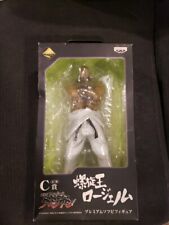
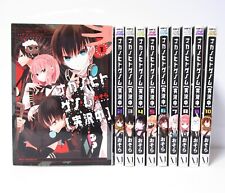

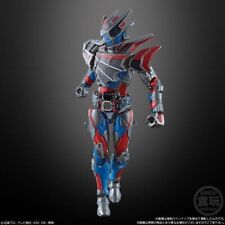
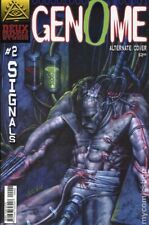
![[US SELLER] BANDAI Rider Hero Series 04 Kamen Rider LIVE Bat Genome Revice 7” picture](/store/img/g/nTsAAOSwt1ph127x/s-l225/-US-SELLER-BANDAI-Rider-Hero-Series-04-Kamen-Rider.jpg)

